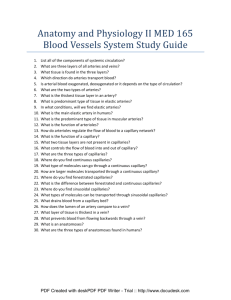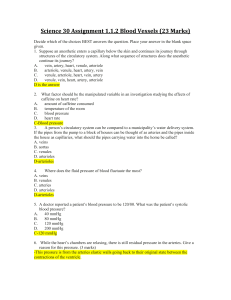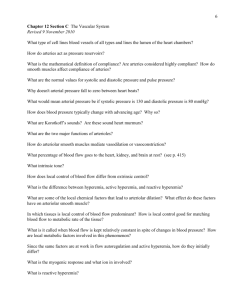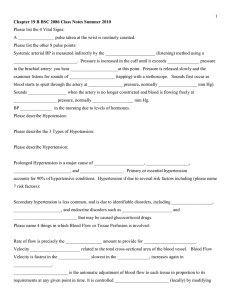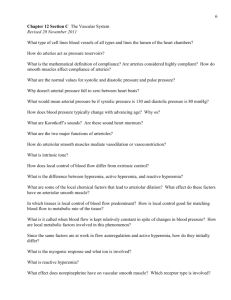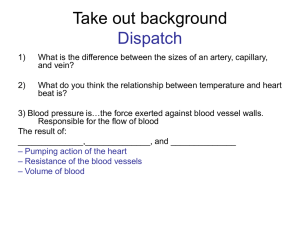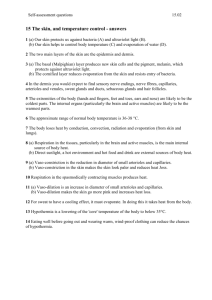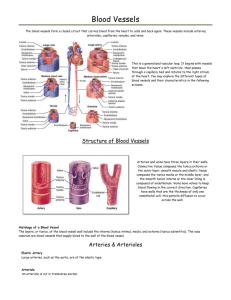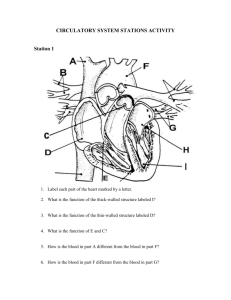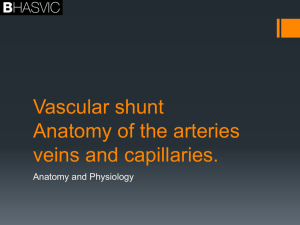Blood Vessels - Cloudfront.net
advertisement
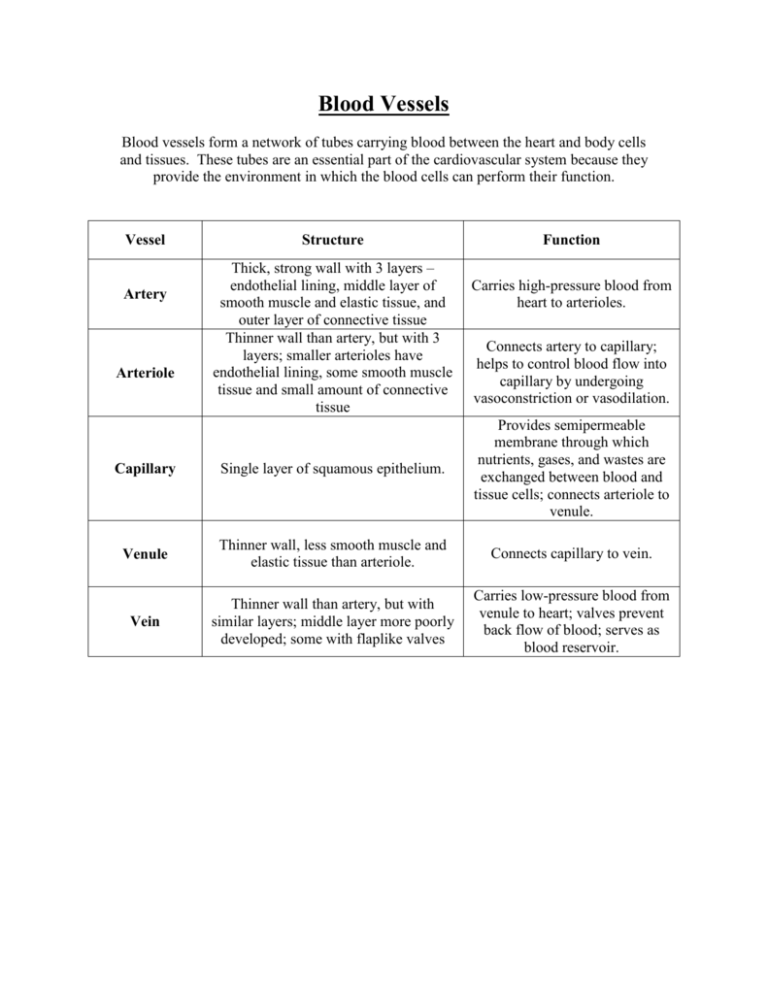
Blood Vessels Blood vessels form a network of tubes carrying blood between the heart and body cells and tissues. These tubes are an essential part of the cardiovascular system because they provide the environment in which the blood cells can perform their function. Vessel Artery Arteriole Structure Thick, strong wall with 3 layers – endothelial lining, middle layer of smooth muscle and elastic tissue, and outer layer of connective tissue Thinner wall than artery, but with 3 layers; smaller arterioles have endothelial lining, some smooth muscle tissue and small amount of connective tissue Function Carries high-pressure blood from heart to arterioles. Connects artery to capillary; helps to control blood flow into capillary by undergoing vasoconstriction or vasodilation. Capillary Single layer of squamous epithelium. Provides semipermeable membrane through which nutrients, gases, and wastes are exchanged between blood and tissue cells; connects arteriole to venule. Venule Thinner wall, less smooth muscle and elastic tissue than arteriole. Connects capillary to vein. Vein Thinner wall than artery, but with similar layers; middle layer more poorly developed; some with flaplike valves Carries low-pressure blood from venule to heart; valves prevent back flow of blood; serves as blood reservoir. All blood vessels except the capillaries have three distinct layers of cells. Each layer is called a tunic, which surrounds the tubular opening of the blood vessel called the lumen The inner lining consists of a layer of endothelium (simple squamous epithelium lying on a connective tissue basement membrane) The middle layer consists primarily of smooth muscle cells and fibers of elastic connective tissue. The outer layer is mainly made up of collagen fibers. The fibers protect the blood vessels and provide anchorage to the surrounding structures. The inner core/cavity is called the lumen. Arteries and Arterioles: have smooth muscle in their lining which allows them to contract and control blood flow. The narrowing of the artery lumen = vasoconstriction (induced by nerve impulses), and an increase in lumen size = vasodilation (occurs in the absence of impulses) Arterioles are smaller than arteries – consists mainly of endothelium with a small amount of smooth tissue Capillaries can be found near almost every body cell; exchange of nutrients and gases occur between the blood and the cells in the capillaries; only have a single layer of endothelium --- allows small molecules to pass through them easily o Most have sphincters at entrance – circular muscles that open and close to regulate the flow of blood through the capillary Venules form when several capillaries combine with one another – collect blood and deliver to the veins, similar in structure as arterioles Veins are similar to arteries in structure, except that their external layer is thicker and their middle layer is a little thinner Blood flowing through a vein lacks pressure, so the blood flows smoothly as compared to blood in the arteries, which pulses Veins have valves which prevent the backflow of blood (when the valves weaken, blood leaks backwards and the pressure of blood dilates the wall of the vein --- called varicose veins

